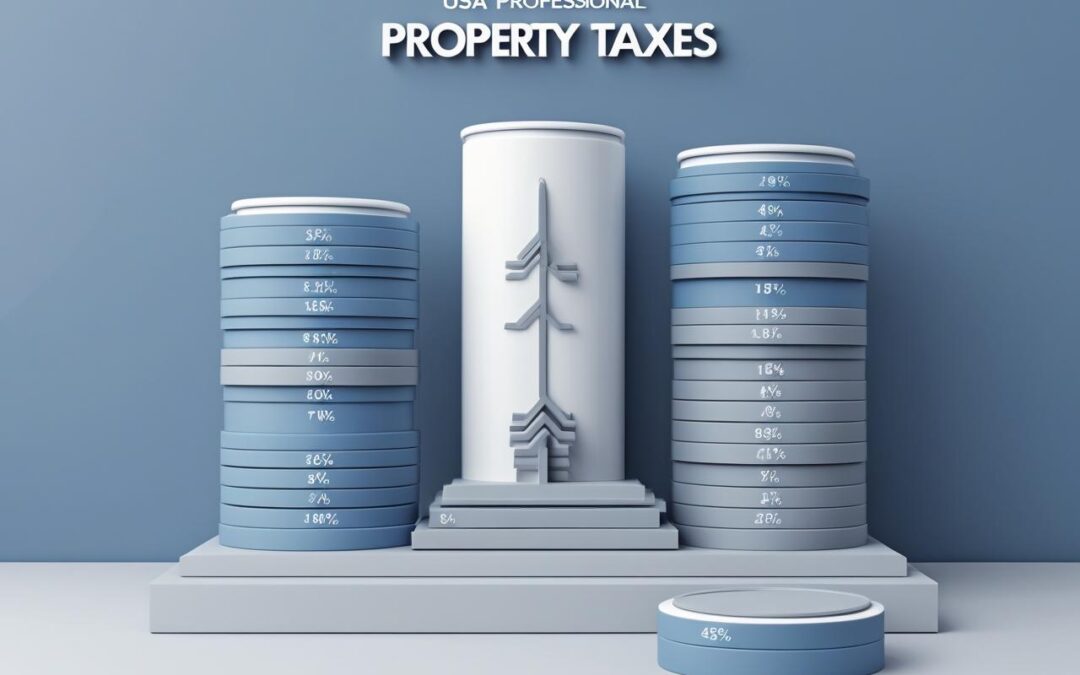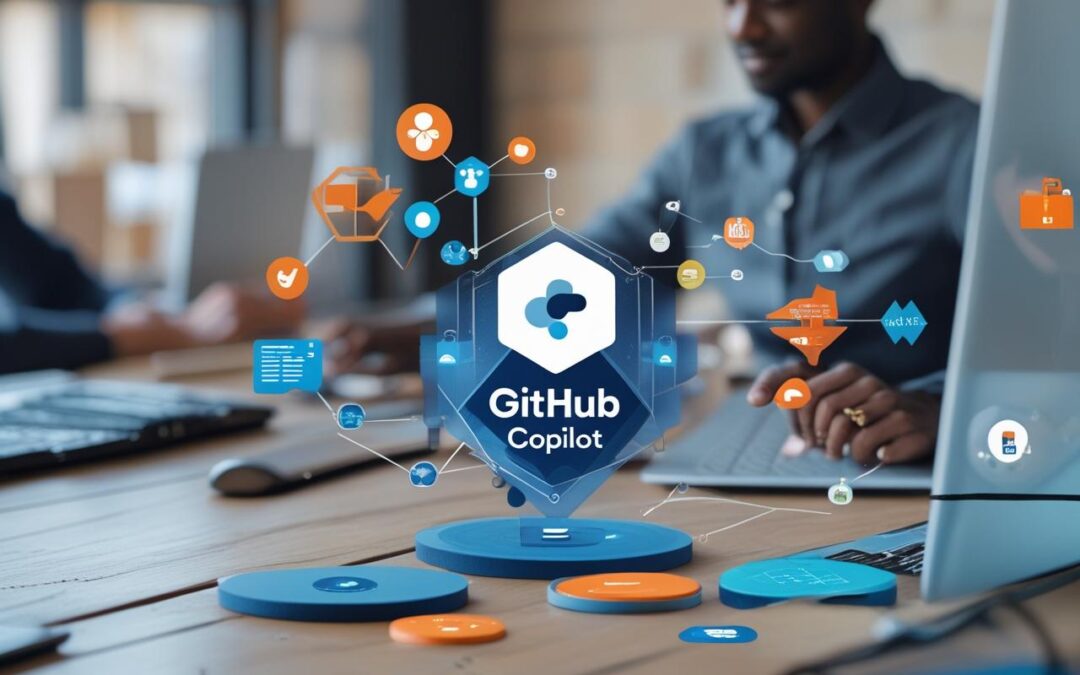
by support | Aug 2, 2025 | Blogs
Buying a home is one of the most exciting milestones in life — but it also comes with terms and costs that can feel a little overwhelming at first. If you’ve started looking into mortgage options, you might have come across the term Private Mortgage Insurance (PMI).
Don’t worry — you’re not alone if you’re wondering what it means and whether you really need it. In this guide, I’ll break down PMI in simple terms, share why lenders require it, and give you practical tips to manage or even avoid it altogether.
What is Private Mortgage Insurance (PMI)?
Private Mortgage Insurance (PMI) is a type of insurance that protects your lender — not you — in case you stop making your mortgage payments.
If you’re putting down less than 20% of the home’s purchase price, most lenders will require PMI. The idea is simple: the smaller your down payment, the higher the risk for the lender, so PMI acts as a safety net for them.
How Does PMI Work?
When you take out a mortgage with less than 20% down, PMI gets added to your monthly mortgage payment. It can also sometimes be paid upfront or built into your loan.
Cost of PMI: Usually between 0.3% to 1.5% of your loan amount annually.
Duration: PMI isn’t forever — you can request removal once your home equity reaches 20%, and lenders are required to remove it automatically at 22%.
Why Lenders Require PMI
From the lender’s point of view, a borrower with a smaller down payment is more likely to default on the loan. PMI reduces their financial risk while still allowing you to buy a home without saving up a massive down payment.
Think of it like training wheels on a bike — it helps balance the risk until you can handle the payments without the lender’s extra protection.
How to Reduce or Avoid PMI
Here are some practical strategies:
Save for a 20% Down Payment – This is the simplest way to skip PMI entirely.
Look for Lender-Paid PMI – Some lenders cover PMI but might charge a slightly higher interest rate.
Use a Piggyback Loan – A second loan to cover part of your down payment.
Refinance When Possible – Once you’ve built enough equity, refinance to remove PMI.
The Pros and Cons of PMI
Pros:
Lets you buy a home sooner without saving 20%
Can help you take advantage of low interest rates sooner
Automatically ends once enough equity is built
Cons:
Adds to your monthly mortgage payment
You’re paying for insurance that protects the lender, not you
Final Thoughts
Private Mortgage Insurance (PMI) can feel like an unnecessary expense, but it can also be the key that opens the door to homeownership faster than you thought possible.
If you plan wisely — by building equity quickly, making extra payments when possible, or refinancing — you can minimize the time you pay PMI and save money in the long run.
Remember: PMI isn’t forever, and with the right approach, your dream home can be yours without paying it for years.

by support | Aug 2, 2025 | Blogs
When you own a home in the United States, property taxes are a part of life. Whether you’re a first-time buyer or a seasoned investor, understanding how these taxes work can save you money and prevent unwanted surprises. In this guide, we’ll break down the basics of USA property taxes, explain how they’re calculated, and share tips to manage them wisely.
What Are Property Taxes?
Property taxes are local taxes charged by city, county, or state governments on real estate you own. These funds are used to support essential public services such as schools, roads, emergency services, and community projects.
Think of it this way: paying property taxes is your way of contributing to your neighborhood’s development and safety.
How Are Property Taxes Calculated?
The formula is fairly simple:
Property Tax = Assessed Property Value × Local Tax Rate
Assessed Property Value – This is determined by your local tax assessor, based on your home’s market value.
Local Tax Rate – Often referred to as a “mill rate” or percentage set by your local government.
For example, if your home is valued at $300,000 and your local tax rate is 1.2%, your annual property tax would be $3,600.
Why Property Taxes Vary Across the USA
Property tax rates can be drastically different from one state to another. States like New Jersey and Illinois tend to have higher rates, while states like Hawaii and Alabama have some of the lowest.
The difference comes down to:
Local budget needs
State laws and policies
Real estate values in the area
When and How to Pay Property Taxes
Most homeowners pay property taxes once or twice a year, but some states allow quarterly payments. If you have a mortgage, your lender might collect property taxes as part of your monthly mortgage payment and pay them on your behalf through an escrow account.
Can You Reduce Property Taxes?
Yes, there are ways to lower your bill:
Apply for exemptions – Many states offer senior, veteran, or disability tax breaks.
Challenge your property’s assessment – If you believe your property is overvalued, you can file an appeal.
Stay informed about local tax changes – Attend local government meetings where tax rates are discussed.
Why Understanding Property Taxes Matters for Investors
For real estate investors, property taxes can significantly impact profit margins. High taxes may eat into rental income, while lower taxes can improve returns. Always research tax rates before buying an investment property.
Final Thoughts
Property taxes may not be the most exciting part of homeownership, but they are essential for keeping communities running. By understanding how they work, budgeting for them, and exploring ways to reduce them, you can make smarter financial decisions as a homeowner or investor.

by support | Aug 2, 2025 | Blogs
If you’re planning to buy a home in the USA in 2025, you might be wondering: Is it the right time? The real estate market has been going through major changes over the past few years, and 2025 is shaping up to be another year full of opportunities — and challenges — for buyers.
In this article, we’ll explore the trends, predictions, and practical tips so you can make confident decisions when stepping into the property market.
1. Interest Rates – Signs of Relief for Buyers
One of the biggest hurdles for buyers in 2023 and 2024 was high mortgage interest rates. In 2025, many economists expect rates to gradually stabilize, with slight declines in some months. While we may not see the ultra-low rates of the pandemic years, even a small drop can make a big difference in monthly payments.
Tip for Buyers: Keep an eye on Federal Reserve announcements. Locking in a rate during a dip could save you thousands over the life of your loan.
2. Home Prices – Slower Growth, Not a Crash
Good news for buyers — home price growth is expected to slow down in many regions. While a full market crash is unlikely due to steady demand, certain cities might see more competitive pricing, especially in areas where inventory has improved.
Best Opportunities:
Suburban neighborhoods outside major cities
Smaller cities with growing job markets
Homes needing light renovations (often priced lower)
3. Inventory Levels – More Choices Coming Up
For years, low housing inventory frustrated buyers. In 2025, more sellers are expected to list their homes as market conditions stabilize. This means more options and less bidding war pressure for buyers.
However, in popular metro areas like Austin, Miami, and Los Angeles, competition will likely remain strong.
4. Technology-Driven Buying Experience
Virtual tours, AI-powered property search tools, and instant mortgage pre-approvals are becoming standard. In 2025, expect the buying process to be faster and more transparent, thanks to tech innovations.
Buyers can now analyze neighborhoods, compare school ratings, and even get 3D home inspections — all before stepping inside a property.
5. Regional Trends – Where to Look in 2025
Texas & Florida: Continued population growth and tax advantages keep these states attractive.
Midwest States (Ohio, Indiana, Kansas): Affordable pricing and steady job growth make them great for first-time buyers.
West Coast: Still pricey, but potential deals in smaller towns and inland areas.
6. Practical Tips for Buyers in 2025
Get Pre-Approved Early – Sellers take pre-approved buyers more seriously.
Work with a Local Realtor – They know market trends and can negotiate better deals.
Stay Flexible – Expanding your search area could unlock more affordable options.
Watch Seasonal Trends – Winter months often bring less competition.
Final Thoughts
The USA real estate market in 2025 offers a more balanced environment for buyers compared to the past two years. While challenges remain — especially in high-demand cities — the combination of slower price growth, improving inventory, and smarter technology can make this the year you find your dream home.
Whether you’re a first-time buyer or an experienced investor, success in 2025 will come from staying informed, acting quickly when the right opportunity appears, and thinking long-term.

by support | Aug 1, 2025 | Blogs
In the ever-changing world of web design, trends can come and go in the blink of an eye. But two styles—Motion UI and Brutalist Design—are making waves for their unique impact. When blended together, they can create websites that are both striking and engaging, breaking away from boring templates and predictable layouts.
What is Motion UI in Web Design?
Motion UI refers to adding animation and movement to websites for a more dynamic user experience. It’s not just about making things “look cool”—it’s about guiding users, making navigation smoother, and improving engagement.
Examples of Motion UI:
Animated page transitions
Hover effects on buttons and images
Scroll-triggered content reveals
Loading animations to keep users engaged
What is Brutalist Design?
Brutalist Design is raw, minimal, and unapologetically bold. Inspired by mid-20th-century Brutalist architecture, it breaks traditional design rules to create something unconventional and memorable.
Key Traits of Brutalist Design:
Large, bold typography
Monochrome or highly contrasting colors
Uneven layouts that challenge the grid system
A “raw HTML” look without excessive polish
Why Combine Motion UI with Brutalist Design?
At first glance, these styles seem like opposites—Brutalism is raw and static, while Motion UI is sleek and fluid. But together, they offer a balance of authenticity and interactivity.
Benefits of the Combination:
Keeps Users Engaged – Bold design grabs attention, motion keeps it.
Breaks Predictability – Stand out from cookie-cutter designs.
Tells a Story – Motion can guide the viewer through bold layouts.
Perfect for Creative Brands – Ideal for agencies, portfolios, and innovative products.
Tips for Successfully Blending the Two
Use Motion Intentionally – Keep animations subtle to avoid visual overload.
Highlight Interactive Areas – Use motion to draw attention to buttons, links, or forms.
Maintain Visual Flow – Motion should guide users through the Brutalist structure.
Match the Brand Personality – This style works best for brands that value creativity and originality.
Best Use Cases
Creative Portfolios – Artists and designers can showcase originality with raw design and engaging motion.
Experimental Web Projects – Perfect for testing new design boundaries.
Innovative Agencies – A bold statement that your agency isn’t afraid to think differently.
Conclusion
The fusion of Motion UI and Brutalist Design is more than a trend—it’s a statement. It’s about breaking the mold, pushing boundaries, and creating experiences users won’t forget. While not every brand will benefit from this edgy combination, those that embrace it can truly stand out in 2025’s competitive digital landscape.

by support | Aug 1, 2025 | Blogs
Introduction – What is Vibe Coding?
The Vibe Coding Concept and Its Future is becoming one of the most exciting topics in the software development community. Vibe coding is more than just sitting in front of a screen and writing lines of code — it’s about creating the right atmosphere to boost creativity, productivity, and mental well-being.
Imagine working with your favorite lo-fi beats in the background, sipping coffee, and enjoying a perfectly arranged workspace that inspires you. Whether in a quiet library, a trendy co-working space, or even a beachside café, vibe coding makes programming feel less like a chore and more like an enjoyable art form.
How Vibe Coding Differs from Traditional Coding
Traditional coding environments often focus on silence, strict discipline, and a formal workspace. While that approach works for some developers, many find it rigid and uninspiring. Vibe coding changes the game by allowing programmers to customize their working environment to match their mood and creative flow.
Key differences include:
🎵 Music and Ambience – Background music or nature sounds that spark creativity.
🤝 Collaborative Energy – Coding with friends online via Discord, Twitch, or Zoom.
🖥 Flexible Workspaces – Freedom to work anywhere — from your living room to the metaverse.
🎯 Mood-Driven Productivity – Adjusting your environment to enhance focus.
This approach transforms coding into a human-centered and enjoyable process.
Why Vibe Coding is Becoming Popular
The rise of remote work and the demand for better work-life balance have accelerated the vibe coding trend. Developers are embracing it for multiple reasons:
Better Mental Health – A pleasant environment reduces stress and prevents burnout.
Boosted Creativity – Inspiring surroundings often lead to innovative solutions.
Social Connection – Live coding sessions and collaborative platforms make programming more engaging.
Fits Remote Developer Lifestyle – Ideal for digital nomads who work from anywhere in the world.
The Future of Vibe Coding
The future of programming is evolving, and vibe coding will play a big role in shaping it. Here’s what we might see in the coming years:
AI-Assisted Coding – Tools like ChatGPT and GitHub Copilot will automate repetitive tasks, allowing developers to focus on creative problem-solving.
Immersive Virtual Workspaces – Developers may work inside 3D metaverse cafés or digital mountain retreats.
Personalized Digital Environments – Custom lighting, soundscapes, and background visuals tailored to each project.
Global Creative Collaboration – Instant teamwork with developers worldwide through high-speed connections and cloud-based coding tools.
Tips to Start Vibe Coding Today
If you want to try vibe coding and experience its benefits, here are some tips:
Set up a comfortable workspace with ergonomic furniture and good lighting.
Use noise-canceling headphones for focus and clarity.
Create or follow playlists that match your coding mood — lo-fi, jazz, ambient, or even classical.
Join online coding communities for support and collaboration.
Keep healthy snacks and water nearby to stay energized.
Experiment with different work locations until you find the perfect vibe.
Conclusion
The Vibe Coding Concept and Its Future show that programming doesn’t have to be a rigid, mechanical process. By blending comfort, creativity, and modern technology, vibe coding is transforming the way developers work.
With the growth of remote jobs, digital nomad lifestyles, and AI-powered coding tools, vibe coding is more than just a trend — it’s a new culture for software development. Whether you’re a beginner or a senior developer, finding your perfect vibe might be the secret to writing better code, staying motivated, and enjoying every step of the journey.
💡 Your logic shapes the code. Your vibe shapes the experience.

by support | Aug 1, 2025 | Blogs
If you’ve been coding for a while, you’ve probably heard about GitHub Copilot — the AI “pair programmer” that suggests code as you type. But here’s the thing… Copilot is no longer just a code helper. With its new integrations and the buzz around Agentic DevOps, it’s stepping into a whole new role — one that could completely change the way we build software.
Let’s break this down in plain English and see why every developer (and business) should care.
🚀 GitHub Copilot is Growing Up
When Copilot first launched, it felt magical — type a comment, and boom, there’s your code. But now it’s becoming smarter, more connected, and way more proactive.
Here’s what’s new:
Works Everywhere You Code
Whether you’re in VS Code, JetBrains, or even the GitHub web editor, Copilot now feels like it’s part of the environment, not just a plugin. No more switching windows — it’s right there, ready to help.
Part of Your CI/CD Workflow
Imagine pushing code and having Copilot check your tests, point out possible build failures, and even suggest deployment scripts — before you hit deploy. That’s exactly what it does now.
Smarter Code Reviews
Forget boring manual reviews. Copilot now reads pull requests, points out bugs, explains tricky code, and even suggests fixes — like having a super-energetic teammate who never gets tired.
💡 What is “Agentic DevOps” Anyway?
Traditional DevOps is about automation and teamwork. Agentic DevOps? That’s automation with initiative.
In Agentic DevOps:
AI doesn’t wait for you to tell it what to do — it takes action.
It watches your code, flags issues, updates tasks, and sometimes even fixes things automatically.
It’s like having a project manager and senior developer rolled into one AI.
🔗 How Copilot Fits into Agentic DevOps
Copilot’s new features make it a perfect fit for this next-gen DevOps style:
Proactive Issue Detection – It predicts problems before they happen.
Smart Automation – From build scripts to rollbacks, it can handle repetitive tasks.
Learns From You – The more you code, the better it understands your style.
🌟 Why This Matters for You
Whether you’re a solo developer or part of a big team, this shift means:
Faster Releases – Less waiting, more shipping.
Fewer Bugs – Early AI checks save you from painful production errors.
Better Collaboration – Clear explanations help everyone on the team.
Scaling Without Stress – Handle more projects without hiring an army of developers.
🏁 Final Thoughts
The combo of GitHub Copilot’s new integrations and Agentic DevOps isn’t just another tech trend — it’s a real productivity boost.
If you haven’t tried Copilot lately, you might be surprised at how much it’s evolved. The future of coding might just be… you, your coffee, and an AI that works as hard as you do.






